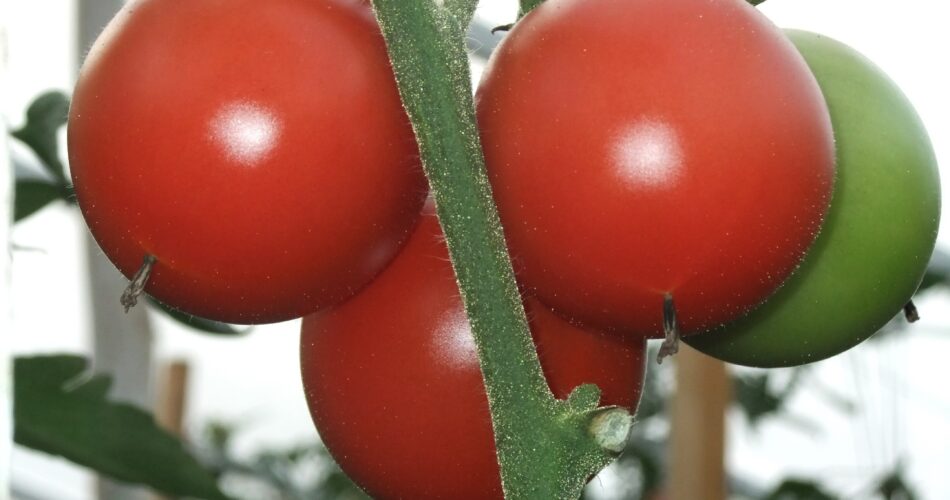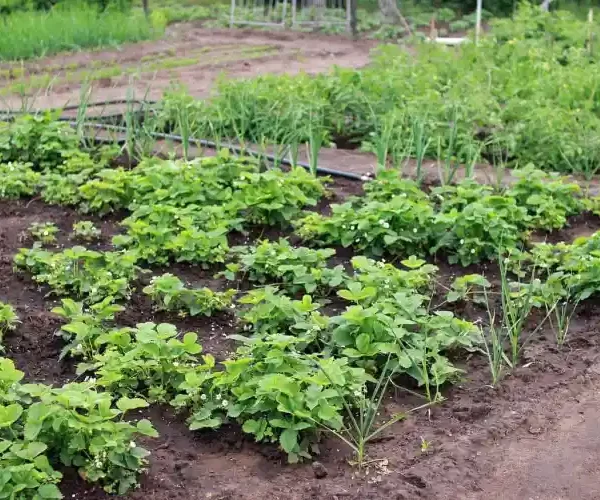Introduction
F1 tomatoes, also known as hybrid tomatoes, represent a significant advancement in tomato breeding. The “F1” designation refers to the first generation of plants resulting from the crossbreeding of two distinct parent varieties. This guide aims to provide a comprehensive understanding of F1 tomatoes, exploring their characteristics, advantages, and considerations for cultivation.
What Makes a Tomato F1?
The term “F1” stands for “first filial generation,” indicating the offspring resulting from the crossbreeding of two genetically diverse parent varieties. In the context of tomatoes, this hybridization is carefully controlled to harness desirable traits from both parents.
Controlled Hybridization
Governed by strict breeding protocols, controlled hybridization involves crossing two genetically distinct parent tomato plants. This method allows breeders to combine specific traits, such as disease resistance, flavor, and yield, resulting in F1 tomatoes that exhibit a combination of these desirable characteristics.
Advantages of F1 Tomatoes
F1 tomatoes offer several advantages that contribute to their popularity among growers and consumers alike.
Hybrid Vigor
One of the key benefits of F1 tomatoes is hybrid vigor, also known as heterosis. This phenomenon results in plants that display enhanced growth, yield, and overall performance compared to their parent varieties.
Disease Resistance
Through careful selection of parent plants, breeders can introduce resistance to common tomato diseases in F1 varieties. This contributes to more robust and healthier crops, reducing the need for chemical interventions.
Uniformity
F1 tomatoes typically exhibit a high degree of uniformity in terms of size, shape, and ripening time. This consistency is advantageous for commercial growers and ensures a more predictable harvest.
Cultivation Tips for F1 Tomatoes
When cultivating F1 tomatoes, it’s essential to consider specific factors to maximize their potential and address any challenges.
Soil and Environmental Conditions
Consulting horticultural bodies and academic experts can provide valuable insights into the optimal soil conditions, temperature ranges, and other environmental factors for F1 tomato cultivation. Local agricultural extension offices and university agriculture departments are excellent resources.
Proper Watering and Fertilization
Implementing proper watering and fertilization practices is crucial for F1 tomato success. It’s advisable to refer to guidelines provided by agricultural authorities or seek advice from local horticultural experts to ensure optimal nutrient levels and water management.
References
To enhance your understanding of F1 tomatoes, consider consulting reputable sources:
- United States Department of Agriculture (USDA)
- International Society for Horticultural Science (ISHS)
- American Horticultural Society (AHS)
- [Research papers by leading tomato breeders and geneticists](insert relevant links)
What does “F1” mean in the context of tomatoes?
F1 stands for “first filial generation” and refers to the first-generation offspring resulting from the controlled crossbreeding of two distinct parent tomato varieties.
How are F1 tomatoes created?
F1 tomatoes are created through controlled hybridization, a breeding technique where two genetically diverse parent plants are crossed to combine specific desirable traits in the resulting hybrid.
What are the advantages of F1 tomatoes?
F1 tomatoes exhibit hybrid vigor, displaying enhanced growth, yield, and overall performance. They often possess disease resistance, uniformity in size and shape, and consistent ripening times.
Why is hybrid vigor important in F1 tomatoes?
Hybrid vigor, or heterosis, contributes to increased plant robustness and productivity. F1 tomatoes benefit from the complementary strengths of their parent varieties, resulting in more resilient and high-performing plants.
Are F1 tomatoes genetically modified (GM)?
No, F1 tomatoes are not genetically modified. They are created through traditional crossbreeding methods, where the genetic material of two different but non-GM parent plants is combined.
How do F1 tomatoes differ from heirloom tomatoes?
F1 tomatoes are hybrids resulting from the controlled crossbreeding of specific parent varieties, aiming to combine desirable traits. Heirloom tomatoes, on the other hand, are open-pollinated varieties that have been passed down through generations without controlled breeding.
Do F1 tomatoes have better disease resistance?
Yes, one of the advantages of F1 tomatoes is that breeders can select parent varieties with resistance to common tomato diseases. This contributes to healthier plants and reduces the need for chemical interventions.
Can I save seeds from F1 tomatoes for planting next year?
While you can save seeds from F1 tomatoes, the resulting plants may not exhibit the same desirable traits as the parent hybrid. It is recommended to purchase new F1 seeds for consistent results.
Where can I find information on optimal growing conditions for F1 tomatoes?
Agricultural extension offices, horticultural societies, and academic resources provide valuable information on the optimal soil, temperature, and environmental conditions for cultivating F1 tomatoes.
Are there any specific challenges in growing F1 tomatoes?
F1 tomatoes require careful attention to proper cultivation practices. Issues may arise if the recommended growing conditions, watering, and fertilization guidelines are not followed. Consultation with local experts can help overcome potential challenges.
- How to Prevent and Reduce Knee and Back Pain While Gardening - July 19, 2024
- Garden Myth: Compost tumblers make compost in two weeks - July 17, 2024
- How do you clean and care for garden tools? - July 16, 2024




